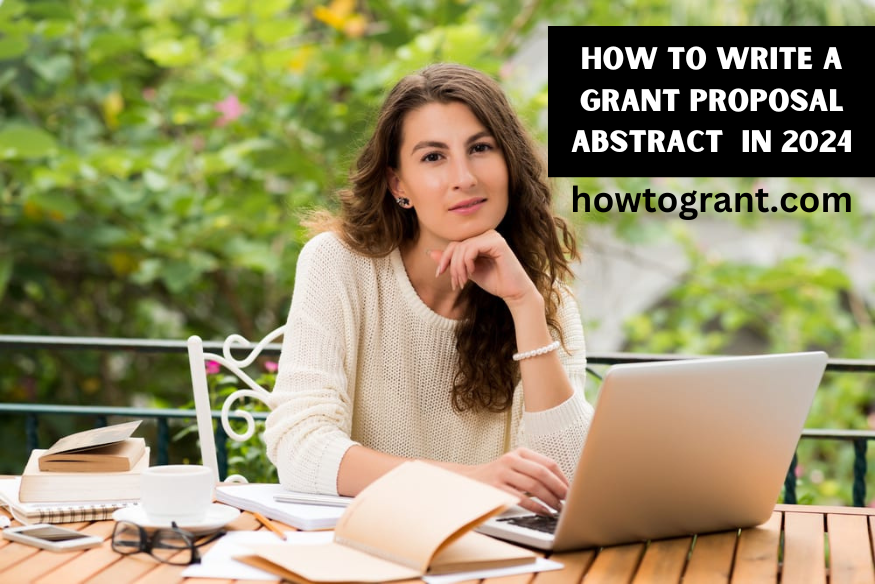Introduction
In the evolving landscape of grant applications, the Grant Proposal Abstract 2024 is a crucial beacon, offering a condensed yet comprehensive insight into the essential components of extensive documents. As the dynamics of the grant-seeking process continue to evolve, the importance of time has become increasingly pronounced.
In this context, the Grant Proposal Abstract serves as a vital tool, providing readers with a swift and illuminating glimpse into the core elements of a proposal. It’s an artful distillation that respects the urgency of the grant application process and serves as the key to unlocking a thorough understanding of the proposal’s essence. In a world where brevity and clarity are paramount, the Grant Proposal Abstract in 2024 emerges as the linchpin that bridges the intricate details of proposals with the need for quick comprehension.
Background:
In the expansive realm of grant proposals, the Grant Proposal Abstract takes center stage, and a compelling abstract begins with a brief background. This introductory section intricately outlines the context of the proposed work, serving as the launchpad for the reader’s journey into the following intricate details. A brief but insightful background sets the tone for what follows, offering a glimpse into the foundational aspects that motivate and justify the proposed project.
It is within this backdrop that the significance and relevance of the grant proposal unfolds, encapsulating the essence of the forthcoming details. The Grant Proposal Abstract, with its carefully crafted background, serves as the initial thread that weaves together the narrative, enticing readers to delve deeper into the intricacies of the proposal.
Aims:
In the landscape of grant proposals, clearly defined aims act as guiding beacons, illuminating the project’s purpose for readers. As we navigate the intricacies of 2024, precision becomes paramount, demanding that grant proposal abstracts crisply articulate the goals that underscore the project’s significance.
These aims serve as directional markers, providing readers with a concise roadmap to understand the purpose and intended outcomes of the proposed project. The Grant Proposal Abstract in 2024 acts as a focal point, ensuring that the objectives are communicated, allowing readers to swiftly grasp the essence of the project and recognize its importance within the specified context.
Method(s): Illuminating the Approach
Transparency is paramount in an effective grant proposal abstract, especially when detailing the methodology. Whether these methods are executed or planned, a clear articulation is essential. By shedding light on the approach, the abstract provides a roadmap for readers, ensuring they comprehensively understand the strategic underpinnings of the proposed endeavor.
This transparency not only instills confidence in the rigor of the project but also allows readers to envision the practical steps and methodologies that will be employed or are already in action. The abstract’s Method(s) section acts as a crucial component, elucidating the procedural aspects and contributing to a comprehensive understanding of the project’s design and execution.
Results:
In the spirit of brevity, grant proposal abstracts succinctly unveil the main findings or anticipated outcomes of the proposed project. This section serves as the teaser, enticing readers with a glimpse into the potential impact the project aims to achieve. By providing a concise overview of the results, the abstract primes readers to understand the significance and implications of the project’s anticipated findings. This strategic approach not only respects the limited time of readers but also serves as a compelling hook, encouraging further exploration into the details of the grant proposal to fully comprehend the potential outcomes and impact of the proposed endeavor.
Conclusions:
In the conclusive moments of the abstract, a power-packed punch emerges, encapsulating the paramount implications or applications of the work. This is the ‘ so what’ moment, where the abstract transcends from a mere summary to a compelling call for attention. The Conclusions section serves as the crescendo, leaving readers with a lasting impression of the project’s significance.
It succinctly emphasizes why the proposed work matters, urging readers to recognize the broader implications or potential applications that make the project noteworthy. This final segment transforms the abstract into a dynamic and persuasive encapsulation of the project, prompting readers to delve further into the detailed proposal to grasp the depth and importance of the endeavor fully.
Grant Proposal Abstract Template
Grant Proposal Abstract Template for the IT Industry in 2024
I. Introduction:
- Title: Enhancing Digital Accessibility for Educational Platforms
II. Background:
- Addressing the need for improved digital accessibility in educational platforms within the IT industry.
- Emphasizing the pivotal role of technology in education.
- Bridging gaps for a more inclusive learning experience.
III. Aims:
- Primary goal: Develop and implement advanced accessibility features.
- Desired outcome: Significant increase in usability and inclusivity of IT-based learning resources.
IV. Methods:
- Comprehensive assessment of current educational platforms.
- Collaboration with IT developers and educators.
- Implementation of cutting-edge technologies like AI-driven accessibility features.
- Detailed roadmap for execution.
V. Scope:
- Integration of accessibility features into commonly used educational software.
- Focus on adaptability for various learning styles and accessibility needs.
- Addressing both immediate challenges and anticipating future developments in the IT industry.
VI. Results:
- Anticipated results: Measurable increase in user satisfaction and engagement.
- Improved accessibility metrics.
- Real-time feedback collection and analysis from educators and students.
VII. Conclusions and Recommendations:
- Project’s potential for revolutionizing the digital learning landscape in the IT industry.
- Contribution of findings and outcomes to future practices and policies.
- Recommendations for widespread adoption of enhanced features across educational technology platforms.
Tips for Abstract Refinement
- Fresh Perspective: Compose a rough draft without tethering yourself to the original text. Strive for a new and summarized outlook.
- Eliminate Redundancy: Avoid duplicating sentences verbatim; instead, encapsulate information novelly.
- Revise Strategically: Address organizational weaknesses, enhance transitions, and eliminate extra details to ensure completeness and accuracy.
- Trim Wordiness: Every word matters; cut through the clutter to maintain clarity and conciseness.
- Grammar Excellence: Rectify grammatical errors with precision, aligning the abstract seamlessly with the document’s overarching voice.
Conclusion
Read More
